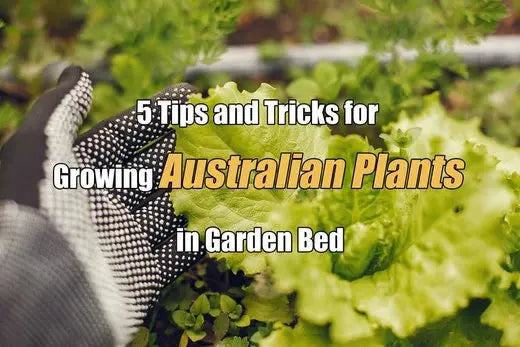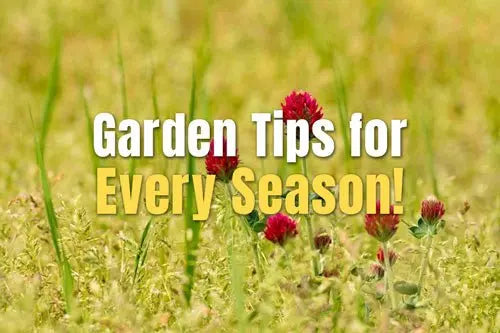Spring Gardening Tips: 10 Tips to Get Your Garden Ready
By: Arham Jeffry
With the spring season just around the corner, it's time to start planning and preparing your garden! Whether you have a novice or an experienced green thumb, these ten tips will help you prepare your garden for the upcoming warmer weather. You can also look for these tips on the internet. From prepping the soil to selecting seedlings, read on to find out all you need to know about getting your garden ready for spring.

Remove all dead plants and debris
Getting rid of dead plants or debris in your garden before planting for the spring is essential. That will help ensure that your new plants have a chance to grow and thrive. You can either compost the dead plants and debris or dispose of them in the trash.
Add fresh compost to your garden beds
It's time to prepare your garden for spring as the days get warmer. Fresh compost added to your garden beds is one of the most significant ways to do this. Compost is full of nutrients that help your plants grow strong and healthy. It also helps improve drainage and aeration in your soil, which is essential for preventing plant diseases. You can buy compost from your local nursery or garden center or make your own. If you're making your own, let it age for at least six weeks before using it in your garden. Fresh compost is essential to a healthy garden, so remember to add it to yours this spring!
Turn the soil in your garden beds
The first step to getting your garden ready for spring is to turn the soil in your garden beds. That will help to aerate the soil and allow the roots of your plants to grow more efficiently. You can do this by using a spade or a tiller. Make sure to loosen the dirt at least 6 inches deep.
If you have any areas of your garden that are particularly compacted, consider renting a rototiller from a local hardware store. That will make the job much more accessible and help you to avoid damaging the roots of your plants.
Also read: Soil Preparation Guide for Beginners.
Plant your spring bulbs
It's time to start planning to plant them now that the weather is warming up. Bulbs are a great way to add colour and interest to your garden and are relatively easy to care for. Here are some pointers to get you going:
- Choose the correct location:
Bulbs need full sun and well-drained soil to thrive. If you're unsure if your soil is well-drained, try this test: dig a small hole in the ground and fill it with water. If the water drains away within an hour or so, you've got well-drained soil; if it takes longer, you may need to amend your soil with sand or organic matter before planting. - Plant at the correct depth:
The planting depth for bulbs should be two to three times their height. For example, if you have a bulb that's 4 inches tall, you'll want to plant it 8-12 inches deep. - Water regularly:
Once your bulbs are planted, water them regularly (about once a week) until they start to sprout. After that, you can reduce watering to every other week or so.
Start your seeds indoors
It's essential to start your seeds indoors so that they have a head start on the growing season. You'll need to provide them with adequate light, water, and nutrients.
You'll need to purchase some quality seed-starting mix and pots to get started. Fill the jars with the mixture and wet it until it's evenly moistened. Then, sow your seeds according to the package directions.
Here are some pointers to get you going: Indoor plants often benefit from grow lights.
You can transplant your seedlings into larger pots or your garden bed once they have germinated and grown to a height of a few inches. Be sure to harden them off first by slowly acclimating them to outdoor conditions over a week or so.
Fertilize your plants
As the weather begins to warm up, it's time to start thinking about fertilizing your plants. Fertiliser gives plants the nutrients they need to grow healthy and strong.
Selecting the proper fertilizer for your plants is crucial because there are numerous varieties on the market. If you need help deciding which fertiliser to use, ask a gardening expert at your local nursery or garden centre.
Once you've selected the right fertilizer, follow the directions on the package carefully. Just as hazardous as not fertilizing at all is fertilizing too much.
Ask a gardening professional if you have any queries about fertilizing your plants. Your plants will thrive this spring with a bit of care and attention!
Water your plants regularly
For a healthy garden, it is essential to water your plants regularly. Water helps your plants to take up nutrients and also helps to keep them hydrated and free from stress. When the sun is not fiercest, water your plants in the early morning or late evening. That will help prevent evaporation and ensure your plants get the necessary water.
Prune your plants
It's time to start thinking about your garden and what you want it to look like this spring. It would help if you pruned your plants as one of your initial tasks. That will help them grow healthy and strong.
Pruning is also essential for the aesthetics of your garden. It can help you shape your plants and control their growth. If you don't prune, your plants may become overgrown and chaotic.
When pruning, it's essential to bear the following in mind:
First, make sure you have sharp shears to make clean cuts.
In addition, cut at an angle to avoid water pooling on the cut surface. Third, don't go overboard! Pruning too much can damage your plant. Just remove dead leaves and branches, and trim back any wild growth.
With these tips in mind, you're ready to start pruning your way to a beautiful spring garden!
Deadhead your flowers
Deadheading flowers is an integral part of keeping your garden looking its best. Deadheading not only helps to keep your flowers looking fresh, but it also encourages new growth and can help to prolong the blooming period.
To deadhead your flowers, snip off the spent blossoms at the base of the stem, careful not to damage the plant. If you are still determining how far down to cut, take a look at the flower buds below the bloom and make your cut just above them.
While deadheading your flowers, keep an eye out for pest or disease indicators and take any afflicted foliage from the plant. By accepting these simple steps, you can keep your garden looking beautiful all season long!
Enjoy your beautiful garden!
Enjoy your beautiful garden! Spring is a beautiful time to get outside and enjoy your garden. The warmer weather and longer days make it the perfect time to get out and appreciate all your hard work. The following advice will help you get the most out of your spring garden:
- Get out there and smell the flowers! Spend time smelling the flowers in your garden, including the roses. Not only will it help you relax, but you'll also get to enjoy their fragrance.
- Take a stroll. A leisurely walk through your garden is a great way to enjoy the sights and sounds of spring. Keep an eye out for birds' nesting or new growth on plants.
- Have a picnic. Spread a blanket in your garden and enjoy a leisurely lunch or afternoon snack surrounded by nature.
- Get gardening! Spring is the perfect time to plant the flowers or vegetables you've wanted to grow. A terrific way to unwind and connect with nature is to get your hands dirty in the garden.
Conclusion
As the weather begins to warm up, it's time to start thinking about getting your garden ready for spring. Here are some pointers to get you going:
- Start cleaning the garden area. Remove any dead leaves or debris accumulated over the winter months.
- Once the area is clean, start tilling the soil to prepare it for planting.
- Next, add some compost or other organic matter to the soil to help improve its quality.
- Then, it's time to start planting! Choose plants that are appropriate for your climate and sunlight conditions.
- Finally, water regularly and fertilise as needed to help your plants thrive.


